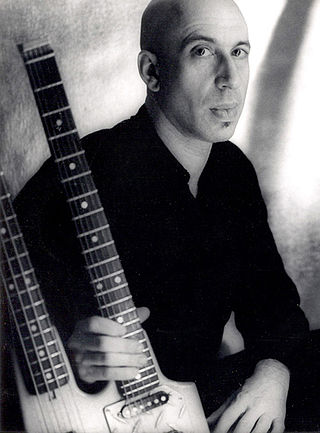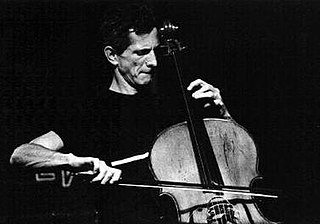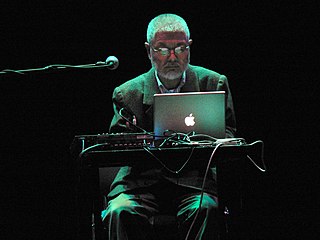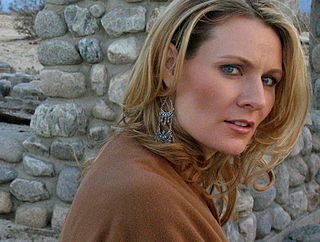Background
Judy Dunaway has presented her compositions, improvisations and installations for balloons throughout North America and Europe at many venues including Lincoln Center Out-of-Doors, REDCAT, the SoHo Arts Festival, the Alternative Museum, the Knitting Factory, Performance Space 122, Roulette, Experimental Intermedia, Soundlab, the New Museum of Contemporary Art, the Bang on a Can Festival, the Guelph Jazz Festival, Podewil, Diapason, Galerie Rachel Haferkamp and ZKM. She has performed as a balloon player in compositions by John Zorn and Roscoe Mitchell, and in improvisations and/or collaborations with the FLUX Quartet, performance artist Annie Sprinkle, Fluxus artist Yasunao Tone, video artist Zev Robinson, visual artists Nancy Davidson and Ken Butler, percussionists John Hollenbeck and Matt Moran, the Illuminati big band, DJ Singe (Beth Coleman), and numerous others. Her works for balloons include electronic and multi-media works, sound installations, and works that incorporate more traditional instrumentation such as string quartet, chorus and Japanese koto. [1]
Awards include a recording grant from the Aaron Copland Fund of the American Music Center, a commission from the American Composers Forum's Composers Commissioning Fund, an artist/researcher-in-residency at Zentrum für Kunst und Medientechnologie, a recording residency at Harvestworks/Studio Pass, and grants from the National Endowment for the Arts, Meet the Composer and the Kalliste Foundation. Ms. Dunaway has published two articles in Musicworks magazine about her work with balloons: A History of the Balloon as a Sound Producer in Experimental Music (Fall 2001), and, Orchestration and Playing Techniques for Balloons as Sound Producers (Spring 2002). Ms. Dunaway's scores are published by Material Press (Frankfurt). [2]
Dunaway has a Ph.D. in Music Composition from State University of New York at Stony Brook, where she studied with analog electronic music composer Daria Semegen and multi-media artist Christa Erickson, and a M.A. in Experimental Music from Wesleyan University (Connecticut) where she studied with composer Alvin Lucier. She also holds a B.S. in Music Education from Hunter College (New York City). In academic year 2004-2005 she was full-time Visiting Faculty in Sound at the School of the Museum of Fine Arts Boston. She is currently a Visiting Lecturer in the Art History Department at Massachusetts College of Art and Design.
Dunaway has also created other works, often to do with social activism or cultural critique. In late 2006 Dunaway founded "S.W.I.R.L." a not-for-profit educational website for audio art and activism concerning the rights of sex workers. Other works by Ms. Dunaway include Affirmative Action, a political multi-media piece utilizing sensor-activated projections as visual music, commissioned by percussionist Russell Greenberg; Sensation, a composition for audience presented at the Mixed Messages Festival where it was conducted by Jackie 60 Award-winner Baby Dee; Duo for Radio Stations, simulcast on WFMU (New Jersey) and WKCR (New York); [3] and the score for Diane Torr's performance art piece Crossing the River Styx, the "high decibel music" [4] that instigated the closing of the Franklin Furnace performance space in 1990.
Free improvisation or free music is improvised music without any general rules, instead following the intuition of its performers. The term can refer to both a technique—employed by any musician in any genre—and as a recognizable genre of experimental music in its own right.

John Zorn is an American composer, conductor, saxophonist, arranger and producer who "deliberately resists category". His avant-garde and experimental approaches to composition and improvisation are inclusive of jazz, rock, Jewish music, hardcore, classical, contemporary, surf, metal, soundtrack, ambient, and world music. Rolling Stone noted that "[alt]hough Zorn has operated almost entirely outside the mainstream, he's gradually asserted himself as one of the most influential musicians of our time".
Glitch is a genre of electronic music that emerged in the 1990s which is distinguished by the deliberate use of glitch-based audio media and other sonic artifacts.

Annea Lockwood is a New Zealand-born American composer and academic musician. She taught electronic music at Vassar College. Her range is vast and often includes microtonal, electro-acoustic soundscapes and vocal music, as well as recordings of natural found sounds. She has also recorded Fluxus-inspired pieces involving burning or drowning pianos.

Elliott Sharp is an American contemporary classical composer, multi-instrumentalist, performer, author, and visual artist.

Downtown music is a subdivision of American music, closely related to experimental music, which developed in downtown Manhattan in the 1960s.

Naked City was an avant-garde music group led by saxophonist and composer John Zorn. Active primarily in New York City from 1988 to 1993, Naked City was initiated by Zorn as a "composition workshop" to test the limits of composition in a traditional rock band lineup. Their music incorporated elements of jazz, surf, progressive rock, classical, heavy metal, grindcore, country, punk rock, and other genres.

Thomas Henry Corra, better known as Tom Cora, was an American cellist and composer, best known for his improvisational performances in the field of experimental jazz and rock. He recorded with John Zorn, Butch Morris, and the Ex, and was a member of Curlew, Third Person and Skeleton Crew.
Tom Chiu (邱崇德) is a violinist and composer of Taiwanese origin working and living in Brooklyn, New York. He is the founder of the FLUX Quartet, who are widely recognized for their performances of technically challenging cutting-edge compositions, including Morton Feldman's six-hour marathon String Quartet No. 2.

Susie Ibarra is a contemporary composer and percussionist who has worked and recorded with jazz, classical, world, and indigenous musicians. One of SPIN's "100 Greatest Drummers of Alternative Music," she is known for her work as a performer in avant-garde, jazz, world, and new music. As a composer, Ibarra incorporates diverse styles and the influences of Philippine Kulintang, jazz, classical, poetry, musical theater, opera, and electronic music. Ibarra remains active as a composer, performer, educator, and documentary filmmaker in the U.S., Philippines, and internationally. She is interested and involved in works that blend folkloric and indigenous tradition with avant-garde. In 2004, Ibarra began field recording indigenous Philippine music, and in 2009 she co-founded Song of the Bird King, an organization focusing on the preservation of Indigenous music and ecology.

Yasunao Tone is a multi-disciplinary artist born in Tokyo, Japan and working in New York City. He graduated from Chiba University in 1957 with a major in Japanese Literature. An important figure in postwar Japanese art during the sixties, he was active in many facets of the Tokyo art scene. He was a central member of Group Ongaku and was associated with a number of other Japanese art groups such as Neo-Dada Organizers, Hi-Red Center, and Team Random. Tone was also a member of Fluxus and one of the founding members of its Japanese branch. Many of his works were performed at Fluxus festivals or distributed by George Maciunas’s various Fluxus operations. Relocating to the United States in 1972, he has since gained a reputation as a musician, performer and writer working with the Merce Cunningham Dance Company, Senda Nengudi, Florian Hecker, and many others. Tone is also known as a pioneer of “Glitch” music due to his groundbreaking modifications of compact discs and CD players.

Pamela Z is an American composer, performer, and media artist best known for her solo works for voice with electronic processing. In performance, she combines various vocal sounds including operatic bel canto, experimental extended techniques and spoken word, with samples and sounds generated by manipulating found objects. Z's musical aesthetic is one of sonic accretion, and she typically processes her voice in real time through the software program Max on a MacBook Pro as a means of layering, looping, and altering her live vocal sound. Her performance work often includes video projections and special controllers with sensors that allow her to use physical gestures to manipulate the sound and projected media.
Bernadette Speach is an American avant-garde composer and pianist. Known for her minimalist approach, she often synthesizes improvisation and through-composed material.

Dana Reason is a Canadian composer, recording artist, keyboardist, producer, arranger, and sound artist working at the intersections of contemporary musical genres and intermedia practices.
Marina Rosenfeld is an American composer, sound artist and visual artist based in New York City. Her work has been produced and presented by the Park Avenue Armory, Museum of Modern Art, Portikus (Frankfurt), Donaueschinger Musiktage, and such international surveys as documenta 14 and the Montreal, Liverpool, PERFORMA, and Whitney biennials, among many others. She has performed widely as an improvising turntablist, and served as co-chair of Music/Sound in the MFA program at the Milton Avery School of the Arts, Bard College, from 2007 to 2020. She has also taught at Harvard, Yale, Brooklyn College, and Dartmouth.
Rhodri Davies is a Welsh musician and comppser. He is a harp player working within the field of free improvisation. He was one of the most prominent members of the London reductionist school of improvised music that was active in the late 1990s and early 2000s and which has been described as being "extremely influential over the last decade".
Martin Simon is a composer and guitarist born in Roznava, Slovakia, in 1975. He has lived and worked in Bratislava, New York City and Warsaw.

Laetitia Sonami, is a sound artist, performer, and composer of interactive electronic music who has been based in the San Francisco Bay area since 1978. She is known for her electronic compositions and performances with the ‘’Lady’s Glove’’, an instrument she developed for triggering and manipulating sound in live performance. Many of her compositions include live or sampled text. Sonami also creates sound installation work incorporating household objects embedded with mechanical and electronic components. Although some recordings of her works exist, Sonami generally eschews releasing recorded work.
Group Ongaku was a Japanese noise music and sound art collective exploring musical improvisation, composed of six composers, including Takehisa Kosugi, Mieko Shiomi, Yasunao Tone. Ongaku in their group name means "music." The group began their activities in Tokyo in 1958, mainly as a students group at the Tokyo National University of Fine Arts and Music. In 1960, they formalized the group by naming it Group Ongaku and continued until 1962. Their music freely crossed from orchestral to ethnic instruments, technology, and daily objects, melting sound production from devices associated with vastly different forms of sonic practices. In addition, they strategized to expand the musical experience in an attempt to merge the act of composition and that of performance. They shifted their focus from just creating sounds to deploying actions as music. From 1961 onwards, they came into contact with Fluxus coordinator George Maciunas and some members became affiliated with Fluxus. The Japanese Fluxus contingency, centering on them, expanded and Tone called this loose collection of people "Tokyo Fluxus."










